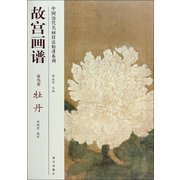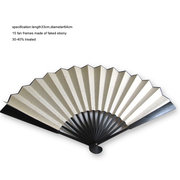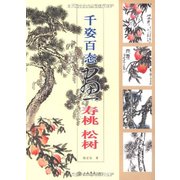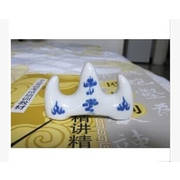- 出版社: 外语教学与研究出版社; 第1版 (2014年9月1日)
- 外文书名: College Writing Skills with Readings(Ninth Edition)
- 丛书名: STEPS AND SKILLS英语技能提高丛书
- 平装: 616页
- 语种: 英语, 简体中文
- 开本: 16
- ISBN: 7513550158, 9787513550154
- 条形码: 9787513550154
- 商品尺寸: 24.4 x 18.6 x 3.6 cm
- 商品重量: 939 g
- 品牌: 外语教学与研究出版社
Details
基本信息
编辑推荐
本书为引进版英语写作教材,原版教材在国外已经数十年数次再版,广受好评。外研社也曾引进该教材的第五版、第六版,十年来在国内各高校受到不少师生欢迎。在此基础上,外研社基于教材第九版,并结合国内英语教学实际情况进行引进。
作者简介
John Langan已有20多年阅读和写作课的教学经验。出版了一系列大学阅读和写作教材,长期致力于探索能够生动有趣地教授学生语言技能的教材。所著《美国大学英语写作》自1985年首次出版以来,每隔四年修订一次。
目录
PART 1 Essay Writing
短文写作
1.An Introductionto Writing 2
2.The Writing Process 19
3.The First and Second Stepsin Essay Writing 46
4.The Third Stepin Essay Writing 79
5.The Fourth Stepin Essay Writing 106
6.Four Bases for Revising Essays 140
PART 2 Patterns of Essay Development
短文的分类和写作手法
7.Introduction to Essay Development 170
8.Description 178
9.Narration 199
10.Exemplification 218
11.Process 238
12.Cause and/or Effect 256
13.Companson and/or Contrast 277
14.Definition 300
15.Division—Classification 321
16.Argument 339
PART 3 Academic Writing
学术写作
17.Writinga Summary 360
18.Writinga Report 372
19.Writing a Research Paper 377
PART 4 Handbook of Sentence Skills
句子写作技巧指南
SECTION Ⅰ Grammar
20.Fragments 405
21.Run—Ons 418
22.Misplaced Modifiers 429
23.Dangling Modifiers 433
SECTION Ⅱ Mechanics
24.Manuscript Form 439
25.Capital Letters 441
26.Numbers and Abbreviations 449
SECTION Ⅲ Punctuation
27.Apostrophe 454
28.Quotation Marks 461
29.Comma 469
30.Other Punctuation Marks 479
SECTION Ⅳ Effective Word Choice
31.Effective Word Choice 485
PART 5 Readings for Writers
以阅读带动写作
Introduction to the Readings 494
Looking Inward 499
Observing Others 544
Confronting Problems 577
Credits 615
Readings Listed by Rhetorical Mode
Preface
Chapter—by—Chapter Changes
Acknowledgments
PART 1 Essay Writing
短文写作
1.An Introduction to Writing 2
Point and Support 3
Structure of the Traditional Essay 6
Benefits of Writing the Traditional Essay 11
Writingas a Skill 11
Writing as a Process of Discovery 12
Writing as a Way to Communicate with Others 13
Keeping a Journal 14
Review Activities 15
Using This Text 17
2.The Writing Process 19
Prewriting 20
Writing a First Draft 28
Revising 30
Editing 31
Review Activities 34
3.The First and Second Steps in Essay Writing 46
Step 1: Begin with a Point,or Thesis 47
Step 2: Support the Thesis with Specific Eyidence 56
Practice in Advanang and Supporting a Thesis 63
4.The Third Step in Essay Writing 79
Step 3: Organize and Connect the Specific Evidence 80
Introductions, Conclusions, and Titles 90
Practice in Organizing and Connecting Speafic Evidence 98
5.The Fourth Step in Essay Writing 106
Revising Sentences 107
Editing Sentences 126
Practicein Revising Sentences 128
6.Four Bases for Revising Essays 140
Base 1:Unity 141
Base 2:Support 144
Base 3: Coherence 148
Base 4: Sentence Skills 151
Practicein Using the Four Bases 155
PART 2 Patterns of Essay Developmeng
短文的分类和写作手法
7.Introduction to Essay Development 170
Important Considerations in Essay Development 171
Patterns of Essay Development 176
8.Description 178
READING Lous Place by Beth Johnson 188
9.Narrahon 199
READING The Yel/ow Ribbon by Pete Hamill 210
10.Exemplification 218
READING Dad by Andrew H.Malcolm 229
11.Process 238
READING How to Do Well on a Job Interview by Glenda Davis 247
12.Cause and/or Effect 256
READING Taming the Anger Monsterby Anne Davidson 265
13.Comparison and/or Contrast 277
READING Born to Be Different?by Camille Lewis 289
14.Definition 300
READING Television Addiction by Marie Winn 309
15.Division—Classification 321
READING Wait Divisionsby Tom Bodett 330
16.Argument 339
READING Ban the Things.Ban Them All by Molly Ivins 351
……
PART 3 Academic Writing
学术写作
PART 4 Handbook of Sentence Skills
句子写作技巧指南
PART 5 Readings for Writers 493
以阅读带动写作
文摘
A conjunctive adverb is a word that, when used after a semicolon, connects two independent (main) clauses.A transitional phrase is a group of words that, when used after a semicolon, connects two independent (main) clauses.
Conjunctive adverb: Napoleon successfully invaded Russia in 1812; however, he did not occupy it for long.Transitional phrase: Jean Piaget made-major contributions to child psychology; in fact, he proved that children and adults reason differently.
Like transitional words, conjunctive adverbs and transitional phrases signal the direction of the writer's thoughts and guide the reader.
You may also be interested in the following product(s)
-

人生不怕从头再来
£9.95 -

中国历代名画技法精讲系列:故宫画谱(花鸟卷·牡丹)
£22.95








 Facebook
Facebook Twitter
Twitter Pinterest
Pinterest Google +
Google +